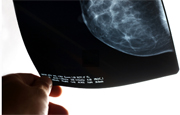
SUNDAY, Feb. 20 (HealthDay News) — Too often surgical breast biopsies, and not less invasive and safer needle biopsies, are being performed on women who have abnormal mammograms, a new study says.
The latest research, conducted in the state of Florida and reported online in the American Journal of Surgery, said that although the rate of surgical biopsies should hover around 10 percent, 30 percent of the breast biopsies studied between 2003 and 2008 entailed the more invasive procedure. That translates to more than 300,000 women a year having surgery they do not need, especially since 80 percent of breast biopsies are benign. And those Florida statistics likely mirror the rest of the country, the researchers added.
There is also cost to consider: The report estimated that $37.2 million in health care expenditures could be saved if needle biopsies were always the procedure of choice.
Senior study author Dr. Stephen R. Grobmyer told The New York Times that he and his colleagues kept seeing patients who had undergone the more invasive surgical biopsies when a needle biopsy should have been performed instead.
“After a while you keep seeing this, you say something’s going on here,” Grobmyer, director of the breast cancer diagnosis program at the University of Florida in Gainesville, told the newspaper.
Experts in the field noted that needle biopsies should almost always be the preferred procedure.
“This new study confirms that many breast disease lesions do not need to be removed by surgical biopsy. Needle biopsy has replaced surgical biopsy,” said Dr. Richard Shapiro, director of surgical oncology operations at the NYU Cancer Institute in New York City. “The take-home message for women is that needle biopsy has surpassed surgical biopsy as the initial tool to diagnose breast cancer. The majority of women almost always have a needle biopsy before requiring the surgical removal of any lesion.”
“Surgery is an essential part of the treatment for breast disease, but certainly surgical biopsy is not the first line of diagnosis or defense,” Shapiro added. “This practice of using needle biopsy should have been changed many years ago. Needle biopsy should be the first option doctors turn to in order to diagnose and identify what a breast lesion is exactly before removal. Surgery is an effective tool for the removal of benign and malignant breast lesions or when a needle biopsy is inconclusive.”
Dr. Deborah Axelrod, director of clinical breast surgery and community outreach at the NYU Cancer Institute, added: “This is an important study which shows overzealous excision of breast lesions where the diagnosis could be made through minimally invasive interventional methods. If they can be diagnosed without a trip to the operating room, then so much the better. You are saving a woman the anxiety of the OR experience, a larger scar, possibly anesthesia, expense and asking their family or friends to take time off to accompany them and take them home from the surgery.”
“Additionally,” she noted, “if you look at other countries, the rate of malignant and benign biopsies is different than in the United States, where we do many more surgeries to obtain a cancer diagnosis. Here, the rate is about two per 10 biopsies which are malignant compared to Sweden, where the rates are approximately over 50 percent.”
More information
For more on breast biopsies, go to the American Cancer Society.

